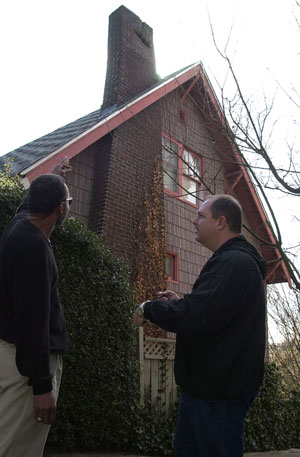|
Venting If the chimney is used to vent a furnace or other appliance used for primary heating it's very important to evaluate and, if necessary, repair the chimney before you continue to use the chimney. The primary function of any chimney is to conduct the hot and poisonous flue gasses safely out of the house. A damaged chimney could fail to exhaust the gasses or protect the house from fire. Did you put a tarp over the chimney and forget your furnace was vented into it?
|
Fire Safety Flue gasses are hot. And wood-fired appliances can cause creosote build-up in the flue that can lead to an even hotter chimney fire. Chimneys are designed to keep the house from catching on fire even during a chimney fire, but to do its job your chimney must be in good condition without blockages or big gaps in the flues. A damaged chimney might not vent all the flue gasses AND it might lead to a house fire.
|
Structural hazard Even if the flues are intact and the chimney serves to vent all the flue gasses and protect the house from fire, it still might be structurally unsafe. Modern chimneys contain re-inforcing bars that help keep the masonry together but older chimneys can tumble down or shed bricks and could injure people or property below. A structurally damaged chimney should be rebuilt or repaired in accordance with current codes so that even if there is another earthquake it won't fall over and jeoprodize people and property.
|
|
Take a Break. Once you have evaluated the immediate situation and taken care of any venting, fire or structural hazards, take a break. You still may have to rebuild, repair or replace your chimney but all the contractors are busy and you have time to decide what to do and get a couple of bids. The repair work can probably wait a while. Now go on to "Rebuild, Repair, Restore" |

Chimney Seismic Index
Prepared for FEMA by Jim Buckley
